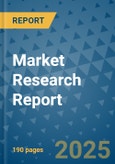This growth is fueled by the rising awareness of sustainable agricultural practices and the increasing need for higher crop yields. Biostimulants are natural substances or microorganisms applied to plants or soils to boost nutrient uptake, improve stress tolerance, and enhance overall plant health. These products play a crucial role in modern farming by optimizing plant growth through natural processes that aid in nutrient absorption, root development, and resilience to environmental stress. As they help improve crop performance with less reliance on chemical fertilizers and pesticides, biostimulants contribute to more sustainable farming methods, promoting soil health and reducing environmental impact. Additionally, biostimulants can improve crop tolerance to abiotic stress factors such as drought, salinity, and extreme temperature challenges that are increasingly becoming common due to climate change. The adoption of biostimulants spans a wide range of agricultural practices, including crop production, horticulture, turf management, and organic farming, offering significant benefits like better seed germination, root development, and flowering.
In 2024, the acid-based biostimulants segment held a 37.7% share and is expected to grow at a CAGR of 10.4% by 2034. Humic and fulvic acids are especially popular for their proven ability to improve soil structure, nutrient availability, and root development, making them an economical and effective solution for various agricultural applications.
The foliar treatment segment held a 71.2% share in 2024 and is expected to grow at a CAGR of 10.4% through 2034. This method is favored for its rapid absorption and targeted application, as well as its compatibility with the equipment commonly used by farmers. Foliar treatments are particularly effective in addressing nutrient deficiencies and stress responses, offering quick results, especially for high-value crops where time-sensitive responses are crucial.
Europe Biostimulants Market was valued at USD 1.7 billion in 2024 due to rising demand for sustainable agricultural practices and organic farming. Legislative support and innovation in product formulations are further accelerating the market’s expansion. Key industry players are investing in research and development to create environmentally friendly products, while precision agriculture is also playing a significant role in the sector’s growth.
Prominent players in the Global Biostimulants Market include Yara International, UPL, Syngenta, BASF SE, Bayer S.p.A., Micromix, Artal Agronutrients, Lallemand, Nutrien, Biostadt India Limited, Nutri-Tech Solutions Pty Ltd, Desarrollo Agricola Minero S.A., and Hello Nature. To strengthen their position, companies in the biostimulants industry are focusing on continuous innovation in product formulations to meet the growing demand for sustainable agricultural solutions. Many are also investing in strategic partnerships with research institutions and other industry players to expand their product offerings and improve their reach in emerging markets. In addition, these companies are leveraging precision agriculture technologies to enhance the efficiency and effectiveness of biostimulant applications.
Comprehensive Market Analysis and Forecast
- Industry trends, key growth drivers, challenges, future opportunities, and regulatory landscape
- Competitive landscape with Porter’s Five Forces and PESTEL analysis
- Market size, segmentation, and regional forecasts
- In-depth company profiles, business strategies, financial insights, and SWOT analysis
This product will be delivered within 2-4 business days.
Table of Contents
Companies Mentioned
The companies profiled in this Biostimulants market report include:- Artal Agronutrients
- BASF SE
- Bayer S.p.a
- Biostadt India Limited
- Desarrollo Agricola Minero S.A.
- Hello Nature
- Lallemand
- Micromix
- Nutrien
- Nutri-Tech Solutions Pty Ltd
- Syngenta
- UPL
- Yara International
Table Information
| Report Attribute | Details |
|---|---|
| No. of Pages | 190 |
| Published | October 2025 |
| Forecast Period | 2024 - 2034 |
| Estimated Market Value ( USD | $ 4.1 Billion |
| Forecasted Market Value ( USD | $ 11.2 Billion |
| Compound Annual Growth Rate | 10.3% |
| Regions Covered | Global |
| No. of Companies Mentioned | 14 |









